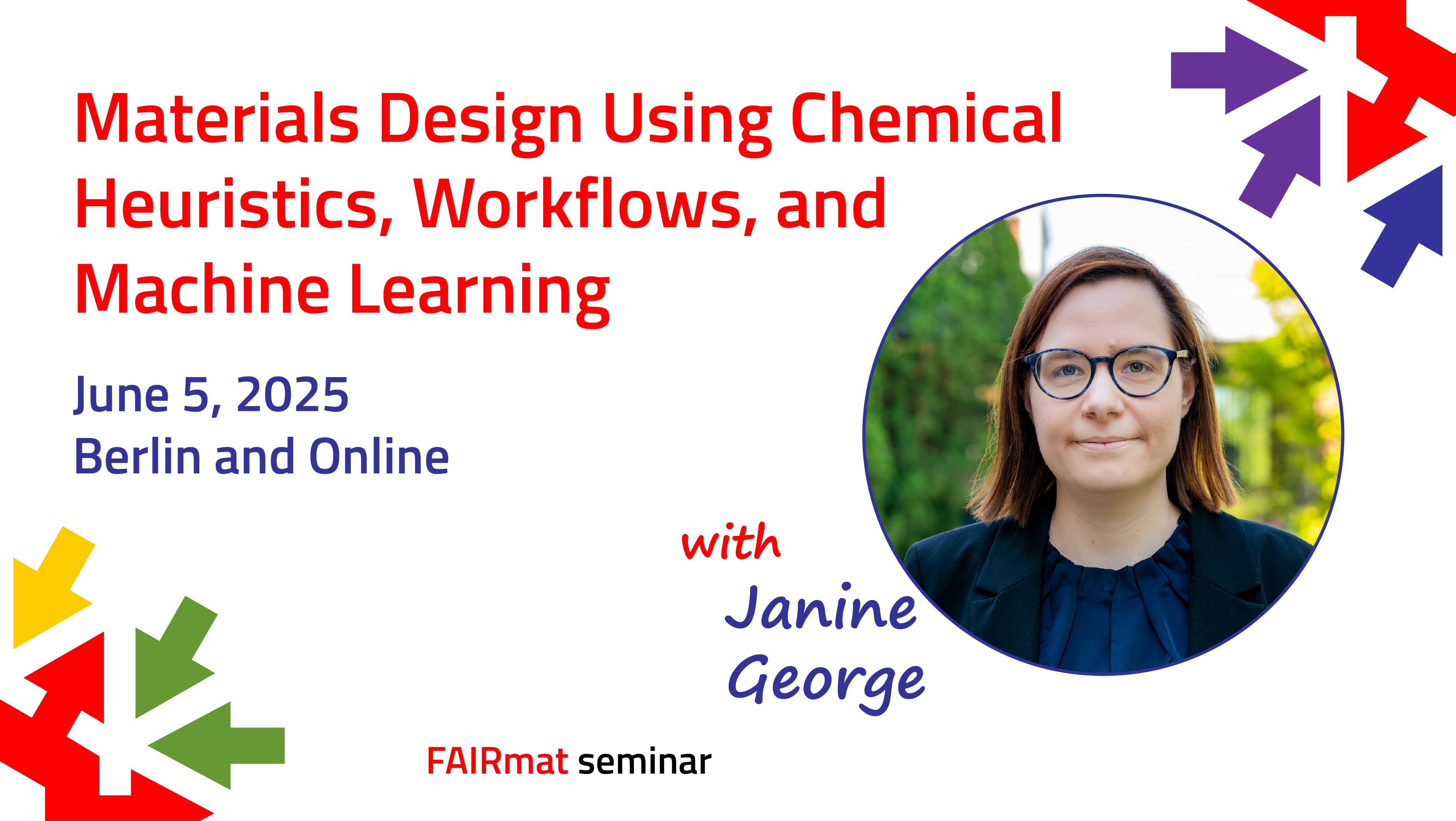Materials Design Using Chemical Heuristics, Workflows, and Machine Learning

The FAIRmat Seminar series continues with a talk by Dr. Janine George, head of the junior research group "Computational Materials Design" at BAM and professor for Materials Informatics at the FSU Jena.
Abstract:
Bonds and local atomic environments are key descriptors of material properties, used to establish design rules and heuristics, and serve as descriptors in machine-learned interatomic potentials and the general machine learning of material properties.[1]
Software implementations such as ChemEnv and LobsterEnv identify local atomic environments based on geometrical characteristics and quantum-chemical bonding analysis (here using Crystal Orbital Hamilton Populations as computed with LOBSTER[2]). Fully automated workflows and analysis tools now enable large-scale quantum-chemical bonding analysis.[3,4] The first part of the lecture will demonstrate how these tools help develop new machine-learning models and intuitive understandings of material properties.[5,6]
New universal machine-learned interatomic potentials, such as MACE-MP-0, have been developed.[7] The second part of the lecture will showcase how these potentials, combined with DFT, can accelerate research. It will focus on the interplay between DFT and machine-learned interatomic potentials, presenting automated workflows for training, fine-tuning, and benchmarking these potentials, implemented in our software autoplex. Additionally, it will show how to train new interatomic potentials from scratch by exploring potential energy surfaces, with the potential to enhance current universal machine-learned potentials.[8]
The lecture will also discuss the trend toward automation in computational materials science and our recent contributions.[9,10]
[1] J. George and G. Hautier, Trends Chem. 2021, 3, 86.
[2] R. Nelson, C. Ertural, J. George, et al., J. Comput. Chem. 2020, 41, 1931.
[3] J. George, G. Petretto, A. Naik, et al., ChemPlusChem 2022, 87, e202200123.
[4] A. A. Naik, K. Ueltzen, C. Ertural, et al., J. Open Source Softw. 2024, 9, 6286.
[5] K. Ueltzen, A. Naik, C. Ertural, et al., in preparation, 2024.
[6] A. A. Naik, C. Ertural, N. Dhamrait, et al., Sci Data 2023, 10, 610.
[7] I. Batatia, P. Benner, Y. Chiang, et al., arXiv 2024, DOI: 10.48550/arXiv.2401.00096.
[8] Y. Liu, J. D. Morrow, C. Ertural, et al., arXiv 2024, DOI: 10.48550/arXiv.2412.16736.
[9] A. S. Rosen, M. Gallant, J. George, et al., J. Open Source Softw. 2024, 9, 5995.
[10] A. M. Ganose, H. Sahasrabuddhe, M. Asta, et al., ChemRxiv 2025, DOI: 10.26434/chemrxiv-2025-tcr5h.
Join us for this engaging discussion in person at the Center for the Science of Materials Berlin or online. Registration is required for online participation.
